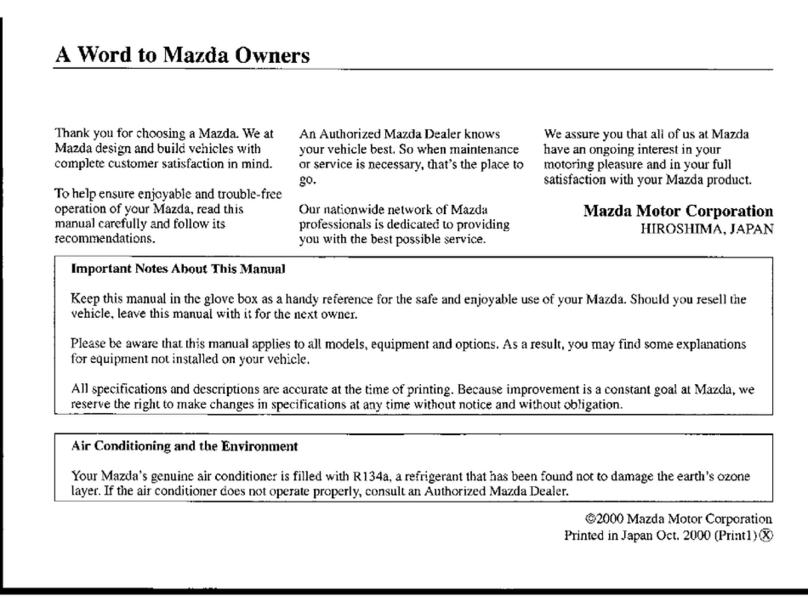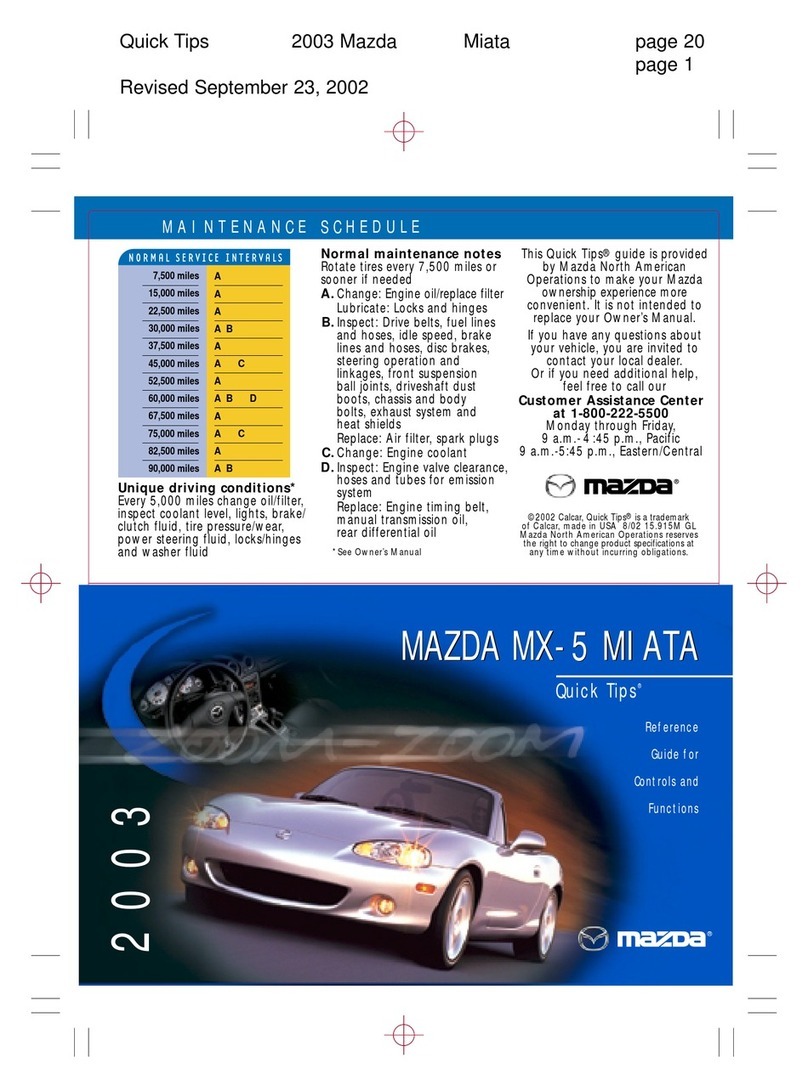Mazda TTCC007700--1155--0011H User manual
Other Mazda Automobile manuals

Mazda
Mazda 2008 B2300 Truck User manual

Mazda
Mazda RX-7 1993 Service manual
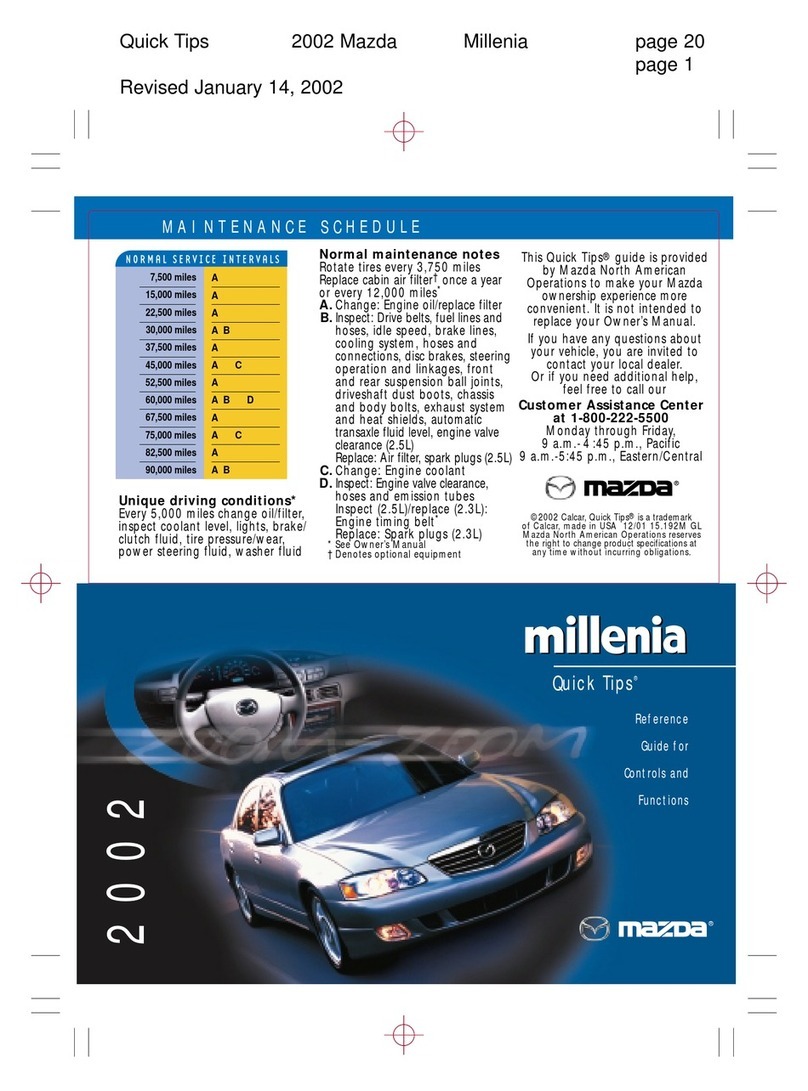
Mazda
Mazda Millenia Assembly instructions

Mazda
Mazda MX-5 Miata User manual

Mazda
Mazda B-Series Installation guide

Mazda
Mazda Mazda 6 Assembly instructions

Mazda
Mazda Tribute User manual

Mazda
Mazda 1984 RX7 Setup guide
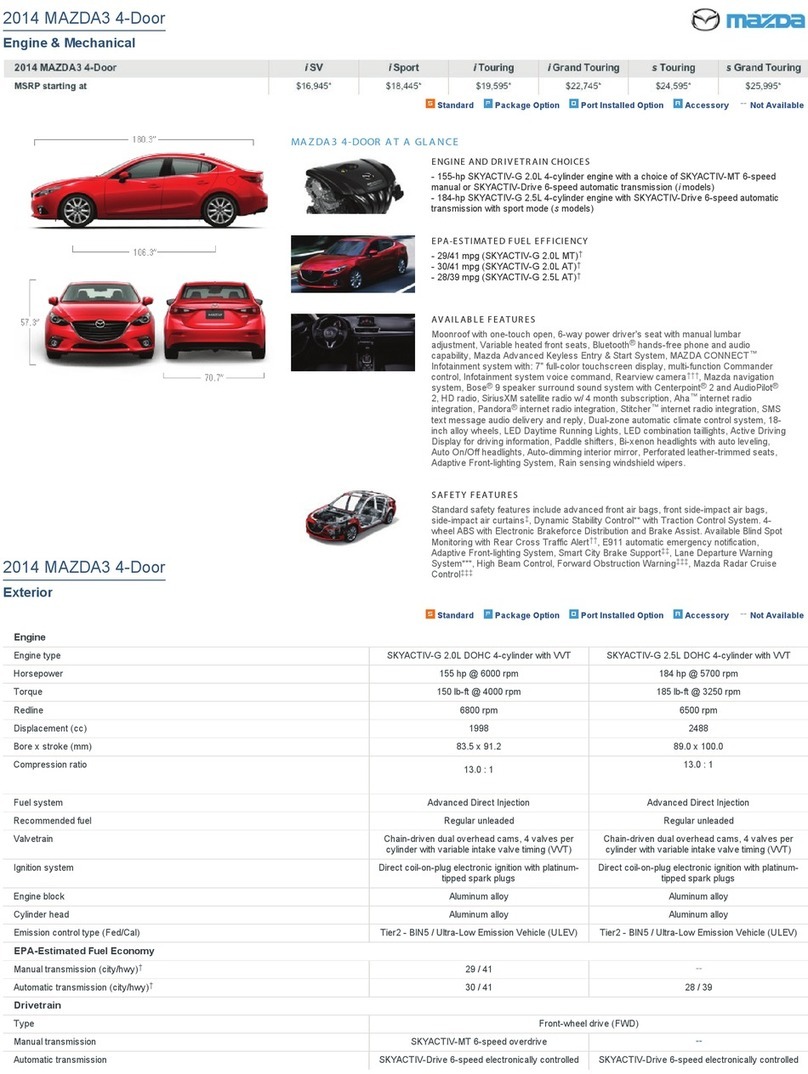
Mazda
Mazda 2014 3 4-Door User manual

Mazda
Mazda 2008 MX-5 Miata User manual

Mazda
Mazda CX-9 Grand Touring 2007 User manual
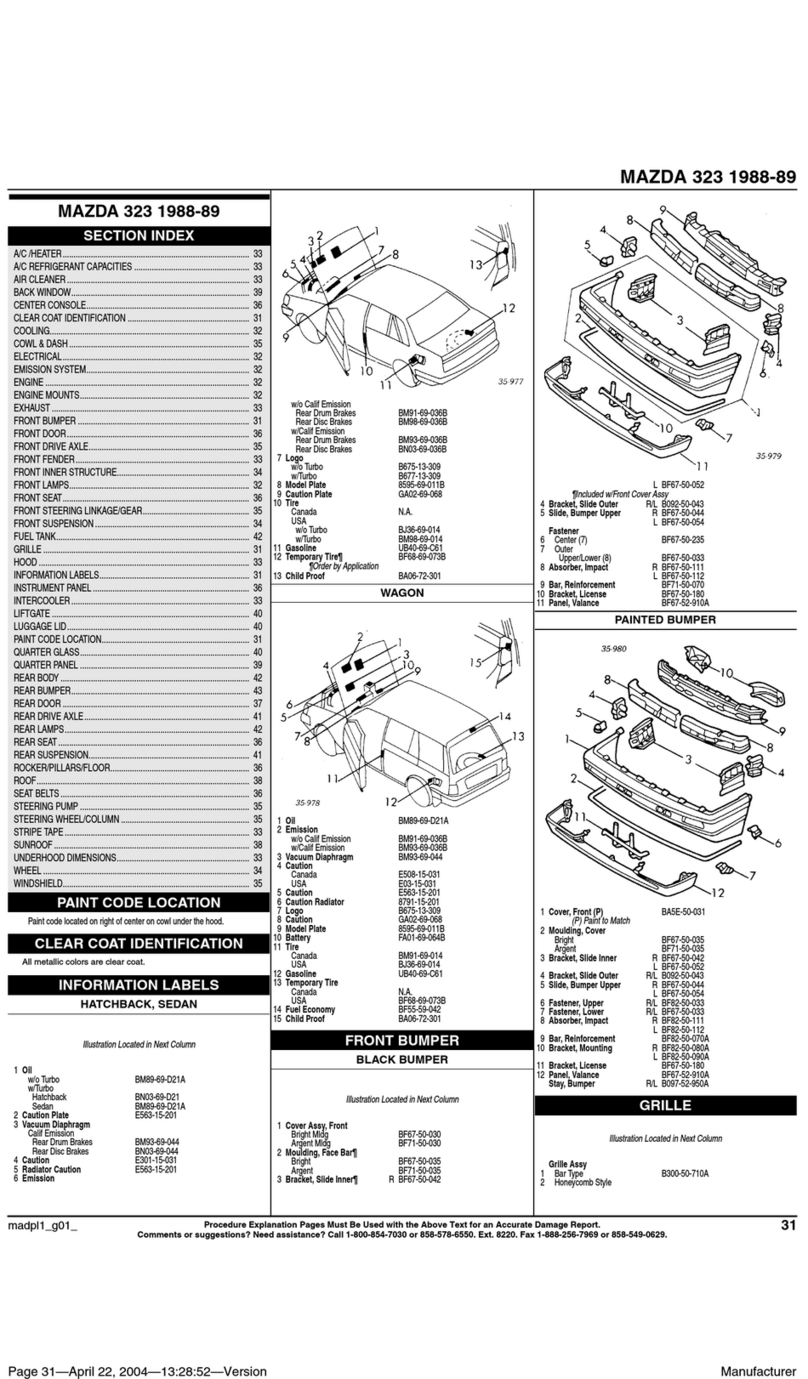
Mazda
Mazda 323 Protege User manual
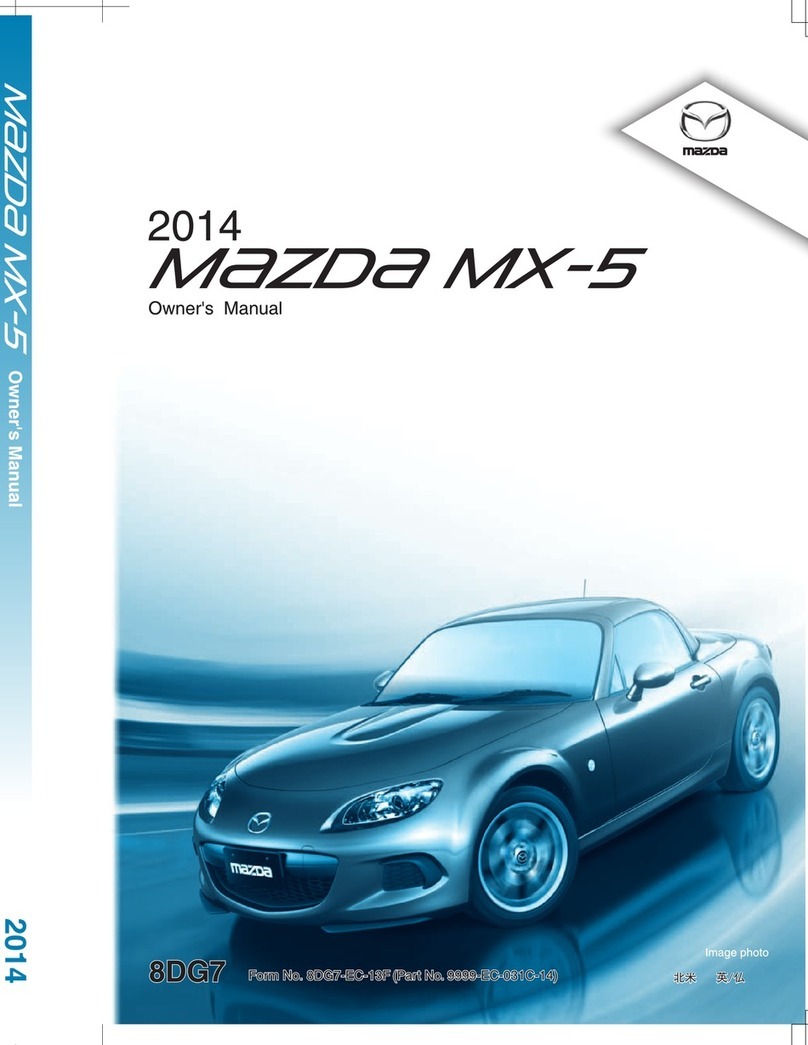
Mazda
Mazda 2014 MX-5 Miata User manual

Mazda
Mazda CX-9 2016 User manual

Mazda
Mazda CX-7 Navigation System User manual

Mazda
Mazda MX-5 Miata Guide

Mazda
Mazda 2007 Mazdaspeed 3 Assembly instructions

Mazda
Mazda mx-5 miata 2012 User manual

Mazda
Mazda 1979-1984 RX7 Reference manual

Mazda
Mazda PROTEGE 5 Guide
